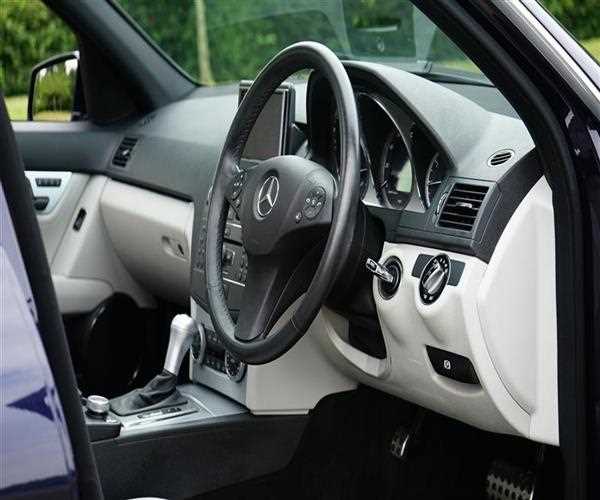
05-Jun-2023 , Updated on 6/6/2023 6:08:49 AM
Advanced Driver-Assistance Systems (ADAS) Technology for safer driving
In recent years, technological advancements have revolutionized the automotive industry, paving the way for safer and more efficient driving experiences. Advanced Driver-Assistance Systems have emerged as a key technological breakthrough, integrating sensors, cameras, and artificial intelligence to enhance the safety and convenience of driving. ADAS offers a range of features designed to assist drivers in various aspects of their journey, reducing the risk of accidents and improving overall road safety. In this article, we will explore the technology behind ADAS and the benefits it brings to modern-day driving.
ADAS encompasses a broad range of systems and features that work in harmony to provide drivers with real-time assistance and warnings. These systems utilize a combination of sensors, cameras, and algorithms to monitor the vehicle's surroundings, detect potential hazards, and alert the driver or even take corrective actions autonomously. Some of the most common ADAS features include:
Adaptive Cruise Control - ACC uses radar or laser sensors to maintain a safe distance between the vehicle and the one ahead. It automatically adjusts the vehicle's speed by accelerating or decelerating to match the flow of traffic. ACC helps reduce driver fatigue, enhances fuel efficiency, and minimizes the risk of rear-end collisions.
Lane Departure Warning and Lane-Keeping Assist - LDW systems use cameras or sensors to detect the vehicle's position within the lane markings. If the vehicle starts to drift out of the lane without using the turn signal, the system alerts the driver through visual, audible, or haptic cues. LKA takes this a step further by actively steering the vehicle back into the lane, providing an additional layer of safety.
Forward Collision Warning and Autonomous Emergency Braking - FCW systems utilize sensors to detect the distance between the vehicle and objects ahead. If the system detects a potential collision, it provides an audible or visual warning to alert the driver to take action. AEB goes beyond warnings and automatically applies the brakes to prevent or mitigate a collision if the driver fails to respond in time.
Blind Spot Detection and Rear Cross Traffic Alert - BSD systems use sensors to monitor the vehicle's blind spots, alerting the driver through visual or audible cues when there is a vehicle in the adjacent lane. RCTA is an extension of BSD and helps drivers detect approaching vehicles when reversing out of a parking space or driveway, reducing the likelihood of collisions.
Parking Assistance Systems - ADAS includes various parking assistance features such as parking sensors, surround-view cameras, and automated parking. These systems aid drivers in maneuvering into parking spaces by providing visual and audible guidance, making parking easier and reducing the risk of parking-related accidents.
The implementation of ADAS brings numerous benefits that contribute to safer driving and reduced accident rates. Firstly, ADAS systems act as an extra set of eyes on the road, continuously monitoring the vehicle's surroundings and alerting drivers to potential dangers. This constant vigilance helps prevent accidents caused by driver distraction or fatigue. Moreover, ADAS can analyze multiple data points simultaneously, including speed, acceleration, distance, and road conditions, to make split-second decisions that humans may overlook or not react to in time.
Secondly, ADAS features can significantly improve road safety by reducing the likelihood of accidents. The ability of these systems to detect and respond to potential collisions faster than human reflexes can save lives. According to studies conducted by the Insurance Institute for Highway Safety, vehicles equipped with AEB have shown a significant reduction in rear-end collisions. The same applies to other ADAS features, as they provide drivers with critical information and warnings to help them make safer decisions.
Additionally, ADAS contributes to enhanced driver convenience and comfort. Features like adaptive cruise control and lane-keeping assist make long drives less fatiguing, allowing drivers to relax and focus more on their surroundings. Moreover, parking assistance systems alleviate the stress and anxiety associated with parking in tight spaces, especially in crowded urban areas.
Furthermore, the integration of ADAS technology in vehicles has the potential to create a safer and more efficient transportation ecosystem. As more vehicles on the road are equipped with ADAS features, the collective impact can lead to improved traffic flow and reduced congestion. ADAS systems can optimize the distance between vehicles, maintain consistent speeds, and provide real-time traffic information, helping to minimize traffic jams and increase overall road capacity.
While the benefits of ADAS are evident, it is important to acknowledge that these systems are not without limitations. ADAS relies on accurate sensor data, and adverse weather conditions, such as heavy rain or fog, can impact the effectiveness of these systems. Additionally, certain ADAS features, such as lane-keeping assist, require clear lane markings to function optimally, making them less reliable on poorly marked or rural roads.
Another critical aspect to consider is the importance of driver education and awareness when using ADAS technology. Drivers must understand the capabilities and limitations of ADAS features to use them effectively. Overreliance on these systems or misunderstanding their functionalities can lead to complacency, potentially compromising road safety. It is crucial for manufacturers, regulatory bodies, and driving schools to educate drivers about ADAS and promote responsible usage.
Looking ahead, the future of ADAS holds immense potential. The integration of artificial intelligence and machine learning algorithms can further enhance the capabilities of ADAS systems. These advancements will enable vehicles to learn from real-time data, adapt to changing road conditions, and make more precise predictions, ultimately making driving even safer.

Student
Economics can be broken down into microeconomics, which looks at individual decisions, and macroeconomics, which is concerned with the economy as a whole. Both types of economics utilize historical trends and current conditions to inform business decision-making and make predictions about how markets might behave in the future. Students who choose to study economics not only gain the skills needed to understand complex markets but come away with strong analytical and problem-solving skills.
Join Our Newsletter
Subscribe to our newsletter to receive emails about new views posts, releases and updates.
Copyright 2010 - 2026 MindStick Software Pvt. Ltd. All Rights Reserved Privacy Policy | Terms & Conditions | Cookie Policy